Mordhau was a hidden gem for medieval warfare fans, but it’s not for everyone. Players tend to be lost in the game’s mechanics and die due to the difficulty curve. Luckily, Torn Banner Studios decided to return to their roots and unveiled Chivalry 2, the sequel to the popular Chivalry: Medieval Warfare.
What is Chivalry 2?
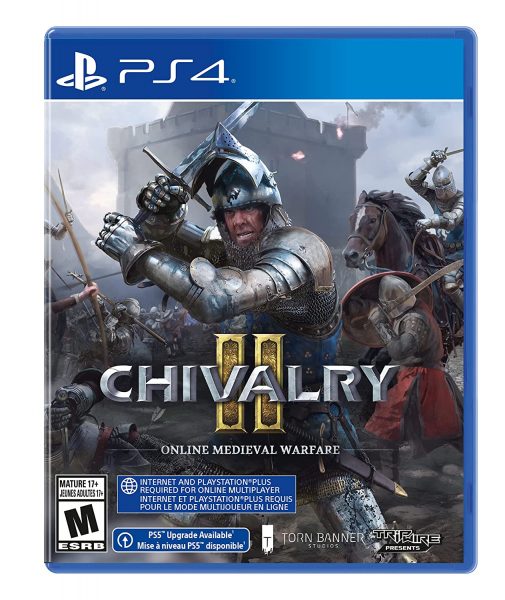

Chivalry 2 is a multiplayer first-/third-person medieval slasher game that takes inspiration from a lot of medieval films and actual battles in history. The game was created by Torn Banner Studios and published by Epic Games. The game will be released on June 8 on the Epic Games Store as well as on PS4, PS5, Xbox One, and Xbox Series X/S.
Check it out on Amazon today to order it for your PS4.
Chivalry 2 Preview
Gameplay
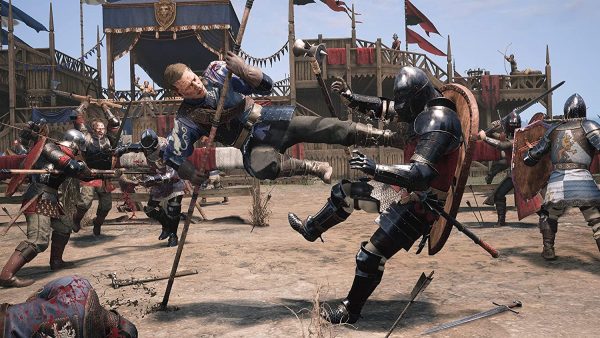

Chivalry 2’s gameplay hasn’t changed that much when compared to its predecessor. It’s still an action game, but unlike Medieval Warfare, players can play from a first- or third-person perspective.
Players can use various weapons throughout medieval history. The game also allows players to use ranged weapons like bows and crossbows; throwing weapons are also available in the game. If players want to use another weapon, they can just find them scattered throughout the game’s map.
In the current iteration of the game, there are three gameplay modes. These are the team objective-based modes, the free-for-alls, and the team deathmatch modes. These modes are real tests of player skill in the game as the mechanics are unforgiving. The game modes can support a maximum of 64 players, though 20 vs. 20 is also viable.
Each of the team objective maps follow the same pattern on the attacking and defending sides, with flavor text on how the battle will go. In addition to this, all of the games have a timer, with the team objective modes being ones that can become sudden death. If the defenders manage to hold out until the timer expires, they win. If the attackers finish what they need to do in that phase, they move to the second phase until they win the game.
There are two teams in the game, the Agatha Knights that wear the white and blue and are generally the goody two shoes of the two teams. Opposite them is the Mason Order that proudly wears red and black. In the beta, players can freely swap between the two teams so long as there’s still a spot. There’s no telling if that’s going to be a feature in the main game, but we’ll see.
Controls and Combat
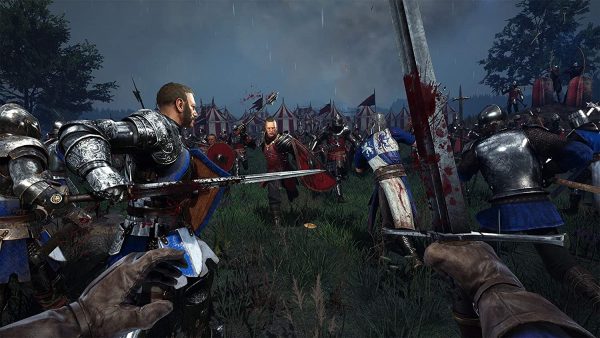

Combat in Chivalry 2 is dependent on how you swing your weapon. If you’re playing on PC, left clicks are horizontal slashes. Mouse wheel downs are downward slashes, and mouse wheel ups are for stabs. Pressing the right mouse button will block or riposte an attack if done at the right moment. You can also kick, punch, and dodge your way to victory in this game. It’s frenetic and absolutely brutal, and the game’s combat and controls bellied this.
Depending on a player’s actions, they can speed up the time they hit other players with their weapons. Moving your mouse to the left while swinging your sword in that direction will let you hit your opponent faster. Immediately looking down while doing an overhand swing would make said swing connect almost immediately. It’s the small things like that can improve how a player fights.
Meanwhile, archers need to consider the draw of their bow, where their target is, how fast they’re going, and the lead they provide to hit their target. If they’re really good—or lucky—they might get a headshot and kill an enemy straight up.
Spears are yet another thing to consider. For one, they only use stabs to damage enemies. However, they have a long reach to make up for their narrow attack pattern. There are halberds, but those are unlocked at a later level. Axes, meanwhile, have their killing edges on the head of their weapon, which means you need to time your attacks.
Anyhow, these are just the weapons available for players to use; we haven’t even talked about the classes yet.
Classes
Chivalry 2 has four classes with three subclasses each. The main classes are Knights, Archers, Vanguards, and Footmen. Here’s the quick rundown of the classes you’ll be playing:
Knights


Knights are complete powerhouses that deal big damage with their greatswords. It’s usually the go-to for players that want to get up close and personal with other players. This class has the most HP compared to the other main classes but is a bit on the slow side.
The Knight class has three subclasses. The one available at the start of the game is the Officer, which is a seasoned veteran equipped with the Trumpet. The Trumpet can heal allies on a set radius. They can also tackle enemies when they’re at full sprint.
The second subclass is the Guardian, which comes equipped with a shield and a one-handed weapon. The shield can break, so players need to not abuse it. Fortunately, you can easily find another shield on the map. They also have access to the Banner, which can heal allies in a radius when planted to the ground. Unfortunately, these banners can be destroyed easily by enemies.
Lastly, the third Subclass is the Crusader, which has access to some of the heavy-hitting weapons in the game. Usually equipped with either a great ax or a great hammer, they stomp towards enemies and turn their bones to dust. They have access to the Oil Pot that sets the ground, and enemies, on fire for a set duration.
Footmen
Footmen meanwhile are Knights with less health, but more movement speed. They’re the healers of Chivalry 2, with all of the ultimates in their subclasses having the ability to throw medical kits at allies. They do, however; differ in function and weapons. The Poleman uses Spears, the Man-at-Arms use a sword and shield, and the Engineer has a mace and can create obstacles.
Vanguard
Vanguards are the game’s glass cannons. All of the Vanguard subclasses deal high damage but have low HP. They’re also the class that has the most variety in terms of ultimates.
The first Vanguard subclass available to players is the Devastator, which has access to various heavy melee weapons. Their ultimate is the Oil Pot that can burn an area and enemies.
The second subclass is the Raider, which is the guy that wants to use two heavy weapons. They’re the ones that can switch between greatswords and huge mallets while other classes have a one-handed weapon instead. Their ultimate is the War Horn, which allows them to heal nearby allies.
The final subclass is the Ambusher, which is exactly what it says on the tin. They can’t equip two-handed weapons, but they can backstab for massive damage. Unfortunately, they can’t sneak around effectively.
Archers
Last but not least are the Archers, which have a bad reputation in a lot of medieval games. However, they’re probably the class that has the higher skill ceiling due to the nature of Chivalry 2’s projectiles. Arrows, and other things that players can lob at enemies, are dependent on server ping, as well as accuracy. Leading is one of the most important things that an Archer needs to do to even hit an enemy, much less kill them.
There are three Archer subclasses: the Longbowman, the Crossbowman, and the Skirmisher. Besides each class having a different ranged weapon, there’s not that much of a difference between the three. However, the Longbowmen have Braziers that can light up their arrows and inflict additional damage to their opponent. The Crossbowmen have the Banner as their ultimate and use crossbows. And lastly, the Skirmishers use spears that they can throw as well as attack in melee range. Their ultimate allows them to completely refill their spears and other ranged ammo.
Sound Design
In terms of sound design, Chivalry 2 is incredibly good. The game sounds great from the start to finish, and the taunts are hilarious and fitting to the era. A lot of the great voice acting and lines from the original Chivalry transitioned over to Chivalry 2. This is something that will surely please the fans of the original.
Graphics and Level Design


In terms of its graphics, Chivalry 2 has a lot of great-looking maps. Its maps have sprawling castles and medieval towns in them. There’s even a Tournament Arena map where players can just go and kill each other without running halfway through the map. Above all else, the game’s various maps each have their feel and unique things in them that make them great to play.
An example of this is the Lionspire map available on the game’s closed beta, which is Medieval Normandy. The attacking Mason army lay siege to the Agathians at this gorgeous beach before they proceed to the keep. In addition to this, there are a lot of things that players can use other than their weapons. These are ballistae, catapults, and even barrels that players can use against their enemies. Combine that with the absolute chaos of the fights and the size of the maps and players wouldn’t run out of areas to fight in.
Maps
Currently, there are five maps on the game’s Open Beta last May. Lionspire wasn’t available, sadly, but these maps have their objectives and unique stuff as well. These are:
- The Slaughter of Coxwell: The Mason Knights didn’t like the fact that Coxwell supported the Agathians. Thus, they decided to teach them a lesson by massacring the entire town. The Agathians, of course, took exception. This map is an absolute slaughterhouse for both sides as the fighting is centered on several key areas. In addition to this, the last objective on this map can be very heartbreaking for the defending side.
- The Battle of Darkforest: This battle starts on an ambush by the Agathians against the Mason Knights. The Mason Knights’ job is to get to the nearby keep and assassinate the Agathian Duke inside. The Agathians will fight tooth and nail to keep the Duke alive, and they will take no prisoners. Make use of careful planning as well as working together to achieve victory.
- The Siege of Rudhelm: The map is similar to the Battle of Darkforest, only the Mason Knights are the ones in the defense this time. The Agathians decide that enough is enough and proceed to attack Rudhelm, planning to kill the despotic duke inside.
- The Battle of Wardenglade: This map is as straightforward as it gets: kill everyone on the opposing side of the field map. Both teams are spawned on either end of the map and will try to kill each other. The first team that manages to kill enough players will win.
- The Tournament Grounds: This is the same as the Battle of Wardenglade, only smaller. The action is always in the middle of the map, with ample places for Archers to shoot their arrows on the stands.
Story
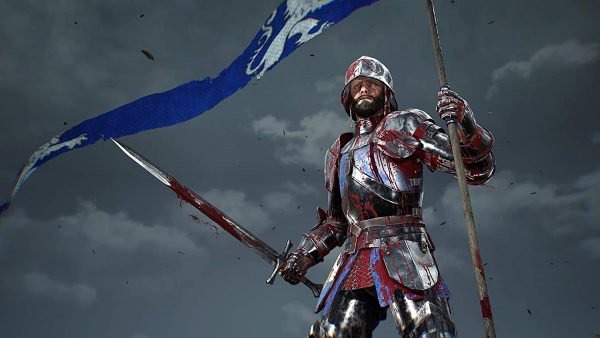

Chivalry 2 takes place decades after the betrayal of the Mason Knights to the Agathians. The Agathians, diminished after the assassination of their king and scattered throughout the land. Meanwhile, the Mason Knights proceeded to rule over everyone and everything with an iron fist, tormenting the peasantry and just being unpleasant in general.
Now, after a long time of reformation, the Agathian Knights formed once more. Now under the banner of a new King, the standard of the Lion of White and Blue flies once more. They plan to reclaim their former glory as well as defeat the Mason Knights who betrayed them and proceeded to run the whole kingdom to the ground. However, the Mason Knights aren’t going down without a fight.
Should Chivalry 2 Excite You?
If you’re a fan of Medieval Warfare and Mordhau but think that the games are a bit on the hard side, then yes. Chivalry 2 is a great game and one that players can go in blind but still have fun doing so. The open beta was incredibly promising, and there’s a lot of fun to be had in this game.
Compare Chivalry 2 to Similar Games
Now that we’ve talked about Chivalry 2, let’s talk a bit about how other games compare to it.
Mordhau
Chivalry 2 and Mordhau have a whole lot in common. Mordhau took some inspiration from the first Chivalry game. However, Mordhau is very lax when it comes to the medieval warfare aspect.
For one, players can equip anything and everything in Mordhau and use it to kill people. There are instances where players just use the lute and bash other players’ heads in. That can happen in Mordhau, not so much on Chivalry 2.
Another distinction is the fact that Chivalry 2 has gone full bore on the Class system, unlike Mordhau. The Class system is a way for players to know the roles that they’re gonna be in during a battle. Players can use anything when fighting in Chivalry 2, but the Classes streamlined the process. In addition to this, dodging, jabbing, kicking, as well as constant blocking was added to Chivalry 2 as well. This added a lot of nuance to the game’s combat, but the game still has a pretty accessible rhythm.
For Honor
For Honor took the Class System and ran off with it. Like Chivalry, the game has four classes in its repertoire. However, the subclasses that compromise them expanded quite a bit. The game also expanded from the usual Knights, Vikings, and Samurai to include other warriors from different cultures as well.
In addition to this, For Honor also has its own story which follows after several characters shown in the game. The classes each play a role, and a lot of other orders have formed after the Cataclysm that compromise the newer classes.
The game’s combat system couldn’t be further from Chivalry 2. For one, For Honor’s combat system is easier compared to Chivalry 2, with more emphasis on the direction of the opponent’s attack. If they attack from the left, block the left side. If they attack from the right, block the right side. Do they do an overhead attack? Block forwards. This isn’t wrong, of course. But there’s some annoyance to be had when there are times when a player’s sure that they blocked something, only to get hit in the proces.
Still, For Honor’s a solid game with a pretty good player base. That is something Ubisoft can be proud of.
Total War: Medieval 2
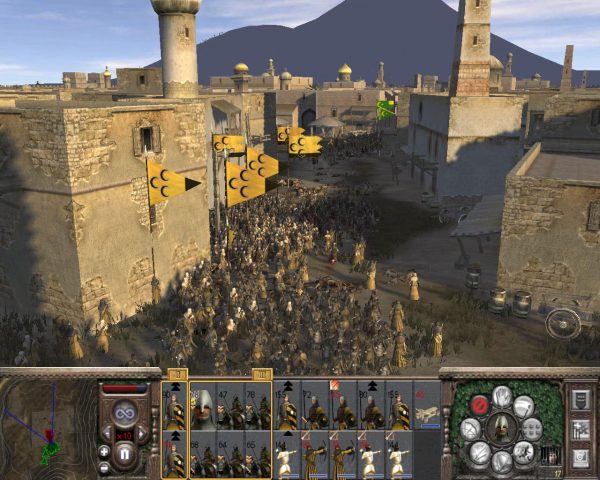

Medieval 2 might be a game from a different genre. However, if you’re someone looking for more medieval warfare, then you should check this out. Unlike Chivalry, Medieval 2 is a strategy game that focuses on conquering land and grand-scale battles. If you’re looking for a game that gives you total control of units, then this is for you.

























